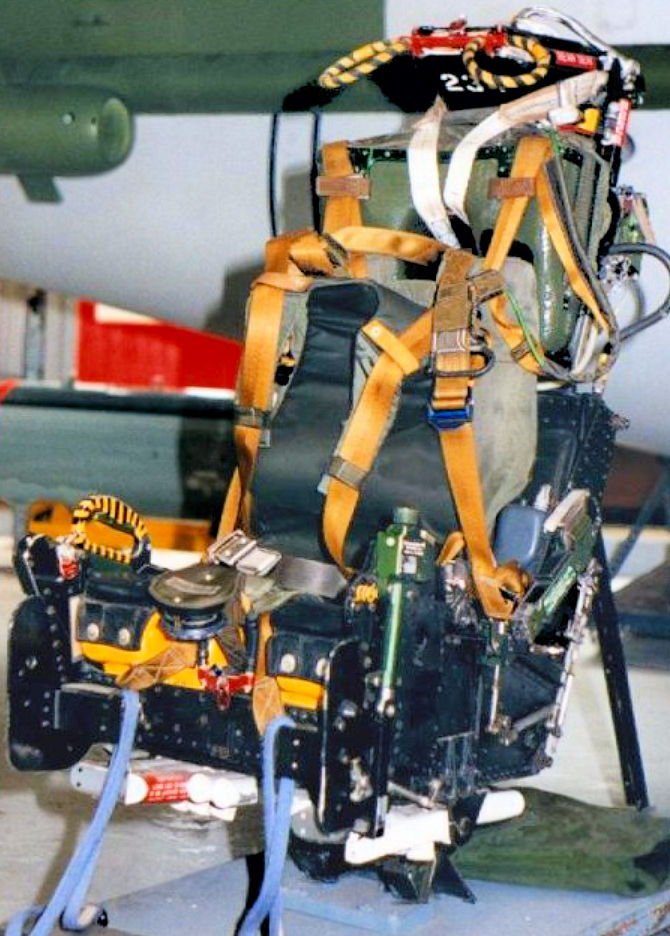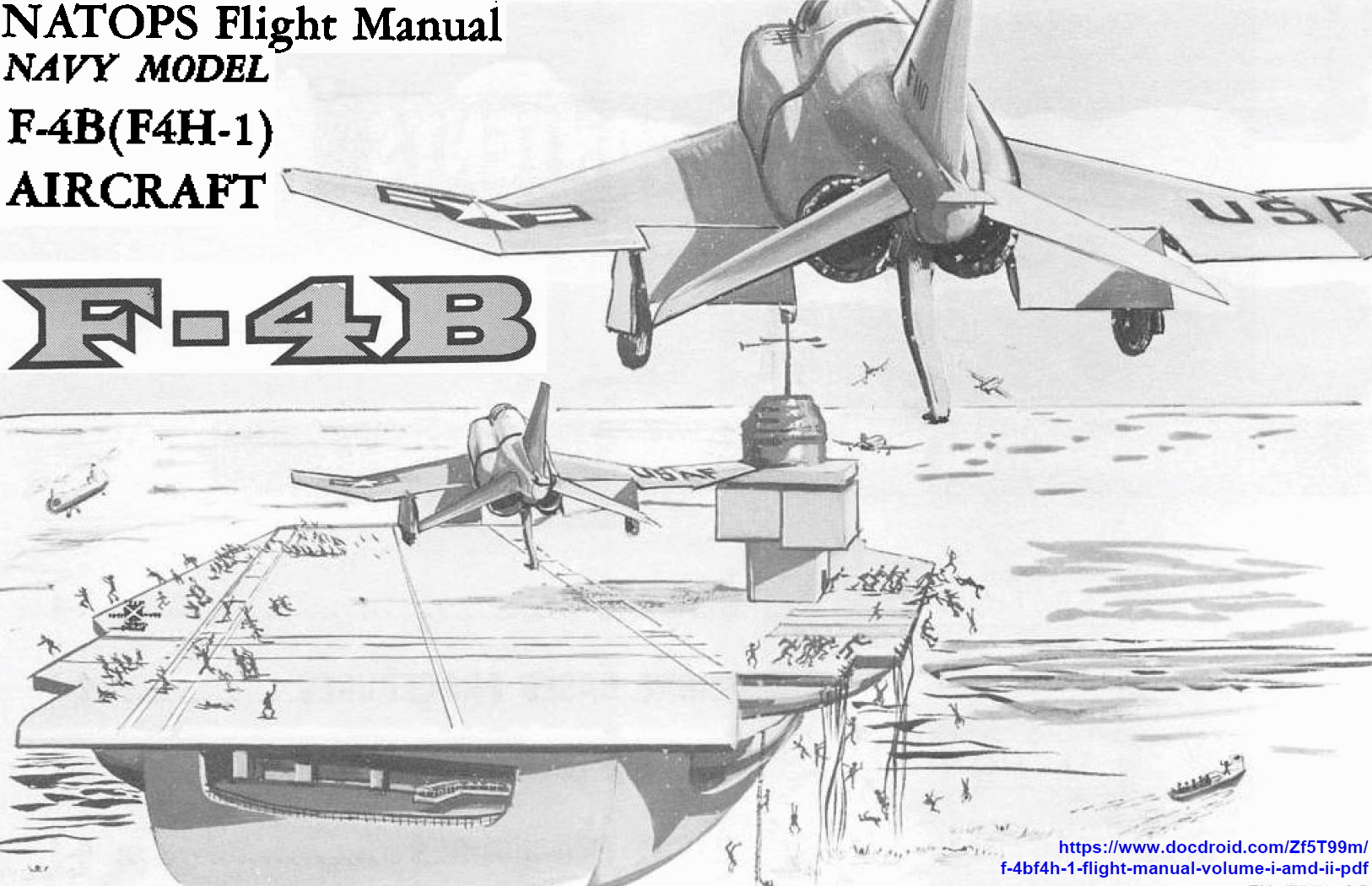After landing when would you put the seat pins in
Thread Starter
After landing when would you put the seat pins in
Hi all, information gathering for a model diorama and in particular the F-4J(uk) unless its appropriate to all old style seats. So after landing when would you put the seat pins in, or would you wait until stopped and shutting down.Equally the seat pin for the upper handle in photos has a large lanyard attached. Would this have been used in service or just the familiar pins/red disc set up.TIA. Steve.
Join Date: Jul 2008
Location: Australia OZ
Age: 75
Posts: 2,586
Likes: 0
Received 53 Likes
on
46 Posts
Join Date: Jul 2008
Location: Australia OZ
Age: 75
Posts: 2,586
Likes: 0
Received 53 Likes
on
46 Posts
The following users liked this post:
The following users liked this post:
Join Date: Jul 2008
Location: Australia OZ
Age: 75
Posts: 2,586
Likes: 0
Received 53 Likes
on
46 Posts
Graphic from same NATOPS above MK-H7 Ejection Seat. RAF F-4 Phantom II Type 7 A1 Ejection Seat: http://www.ejectionsite.com/raf_f4seat.htm Mk7 Ejection Seat – Martin Baker (martin-baker.com) Also: F-4 Phantom II Martin-Baker Mk. H-7 Ejection Seat: The Ejection Site


The following users liked this post:
Join Date: Jul 2008
Location: Australia OZ
Age: 75
Posts: 2,586
Likes: 0
Received 53 Likes
on
46 Posts
Photo: RAF F-4 Phantom II Type 7 A1 Ejection Seat: http://www.ejectionsite.com/vbk/type%207RAF-1.jpg


The following users liked this post:
Seat pins on 74
Standard disclaimer :
It's a long time since I strapped someone into a J, but I recall the seat pins were all attached by lanyards, 1/2 inch webbing.
The face blind had a wee pouch attached to it as well. It was the last pin out, the rest and their lanyards went into the pouch, then we took the last pin and it's pouch out, handed it to the occupant.
I suspect that's what the original poster has seen.
Happy to be corrected, it wasn't yesterday!
Cheers!
It's a long time since I strapped someone into a J, but I recall the seat pins were all attached by lanyards, 1/2 inch webbing.
The face blind had a wee pouch attached to it as well. It was the last pin out, the rest and their lanyards went into the pouch, then we took the last pin and it's pouch out, handed it to the occupant.
I suspect that's what the original poster has seen.
Happy to be corrected, it wasn't yesterday!
Cheers!
Thread Starter
Standard disclaimer :It's a long time since I strapped someone into a J, but I recall the seat pins were all attached by lanyards, 1/2 inch webbing.The face blind had a wee pouch attached to it as well. It was the last pin out, the rest and their lanyards went into the pouch, then we took the last pin and it's pouch out, handed it to the occupant.I suspect that's what the original poster has seen.Happy to be corrected, it wasn't yesterday!Cheers!
74 pins
Mind you, usually had a J79 to mend by then….
Cheers!
The following users liked this post:
Avoid imitations
Join Date: Nov 2000
Location: Wandering the FIR and cyberspace often at highly unsociable times
Posts: 14,576
Received 425 Likes
on
224 Posts
I think that on the JP the procedure was to stop clear of the runway and replace the seat pan handle pins during the after landing checks before taxying in. The ground crew would replace the top handle pins in dispersal before shutdown.
The following users liked this post:
although we did have a solo student taxi in and found the only pin out was the top one in the empty seat.😳
The following users liked this post:
The following users liked this post:
Join Date: Mar 2010
Location: Often in Jersey, but mainly in the past.
Age: 79
Posts: 7,812
Received 137 Likes
on
64 Posts
I was wondering how you could achieve that. Strapped in tight, and fumbling behind ones head/helmet to insert a pin in an invisible hole seems almost impossible ... with the added risk of accidentally pulling that handle in the process! Or does the seat-pan pin isolate the face-screen operation?
The following users liked this post:
We're wandering off a bit here, but here's my bit.
Leeming & Scampton 80s-90s JP 3A & 5A on crew in, "top pins" got canopy sear on 3a, then RHS top pin, then LHS individually removed and handed to LHS occupant tag first by the ground crew. At that point, crew had been assisted by groundcrew to get all relevant straps connected but no pins removed. At return to dispersal after flight, ground crew would first check only the tops pins & drogue pins in stowage before being handed the top pins in the order LHS, RHS, Canopy (if present).
On Tornado F3, also removed/fitted the canopy rocket sear on crew instruction, in the same manner as awkward to get at.
Leeming & Scampton 80s-90s JP 3A & 5A on crew in, "top pins" got canopy sear on 3a, then RHS top pin, then LHS individually removed and handed to LHS occupant tag first by the ground crew. At that point, crew had been assisted by groundcrew to get all relevant straps connected but no pins removed. At return to dispersal after flight, ground crew would first check only the tops pins & drogue pins in stowage before being handed the top pins in the order LHS, RHS, Canopy (if present).
On Tornado F3, also removed/fitted the canopy rocket sear on crew instruction, in the same manner as awkward to get at.
The following users liked this post:
Join Date: Feb 2006
Location: Hanging off the end of a thread
Posts: 33,056
Received 2,930 Likes
on
1,250 Posts
Was that throughout the RAF? I know the Jags in Germany never fitted the main gun sear pin, whilst they did in the UK. So they're were differences per commands.
The following users liked this post:
Throughout my service on JP3a, 5a, Tucano, Hawk, Tornado F3, the main gun sears were only ever fitted/removed by armourers as they changed status to/from Safe for Parking & Safe for Servicing. On the flightline always Safe for Parking if available for use. Some time late 80s I think a/c parked "S" in the hangar also had to be "Safe for Servicing" before being put inside, where they hadn't been before.
The only maintenance that could be performed on an a/c "Safe for Parking" is the Flight Servicing required to either directly prepare or recover from flight. Tyre worn to limits after flight? Seats to "Safe for Servicing", change wheel assembly, seats back to "Safe for Parking". All recorded on separate job cards. On turn-round servicing, the F700 co-ordinator was able to put seat status changes on the F716 Flight Servicing Certificate & also decide from a Eng Order Book list if the repairs carried out invalidated the flight servicing or not - but it still had to be documented, as the last SNOW number would be different. That allowed aircrew to see that something had been done to the a/c since the previuos crew had signed it in & it had been officially decided that whatever had been done did not affect the validity of the preparation for the next flight. The armourers had a vehicle as they had to go backwards & forwards to the line hut so much to keep the paperwork status up to date. We were launching waves of up to 14 a/c at a time, so waiting until all had been looked at as necessary by the armourers before they did any paperwork meant the first a/c could be waiting for their signatures for some time before being made available for its next trip.
The only maintenance that could be performed on an a/c "Safe for Parking" is the Flight Servicing required to either directly prepare or recover from flight. Tyre worn to limits after flight? Seats to "Safe for Servicing", change wheel assembly, seats back to "Safe for Parking". All recorded on separate job cards. On turn-round servicing, the F700 co-ordinator was able to put seat status changes on the F716 Flight Servicing Certificate & also decide from a Eng Order Book list if the repairs carried out invalidated the flight servicing or not - but it still had to be documented, as the last SNOW number would be different. That allowed aircrew to see that something had been done to the a/c since the previuos crew had signed it in & it had been officially decided that whatever had been done did not affect the validity of the preparation for the next flight. The armourers had a vehicle as they had to go backwards & forwards to the line hut so much to keep the paperwork status up to date. We were launching waves of up to 14 a/c at a time, so waiting until all had been looked at as necessary by the armourers before they did any paperwork meant the first a/c could be waiting for their signatures for some time before being made available for its next trip.
The following users liked this post:
Thread Starter
Thanks everyone for contributing, it's very much appreciated. Whilst nerding away I found this site and you'll see 2 photos of the F4J on the move with the top pins (with pouch) of both front and rear seats fitted.
https://bpag.co.uk/gallery/ze360-in-service/
https://bpag.co.uk/gallery/ze360-in-service/
Interested as to why so many photos of Phantom show them taxying in / out with canopies open. Surely they could not then eject?
I presume the seats must have had a minimum of, say, 90 kts to activate, so were not an escape option below that speed?
lsh
I presume the seats must have had a minimum of, say, 90 kts to activate, so were not an escape option below that speed?
lsh
The seats were zero/zero so in theory you could eject whilst taxing or stopped (if your canopy was closed) but the chances of actually needing to do that were pretty low to say the least...
The following users liked this post:
I was wondering how you could achieve that. Strapped in tight, and fumbling behind ones head/helmet to insert a pin in an invisible hole seems almost impossible ... with the added risk of accidentally pulling that handle in the process! Or does the seat-pan pin isolate the face-screen operation?
In the PR9 (Mk 3 0ft 70kts seat) the ground-crew removed the top pin once you’d strapped in; after landing, you could reach up and over to put your own pin in! It sounds somewhat hazardous, but in reality you need a hell of a pull to initiate the seat firing, furthermore, if you used the face-screen handle, you had to pull it all the way down over your face. Surprisingly easy to fit the top pin after landing, although not if you had short arms - we didn't even stop taxiing. 😳
The following 2 users liked this post by H Peacock:





 Cartoon from:
Cartoon from: 